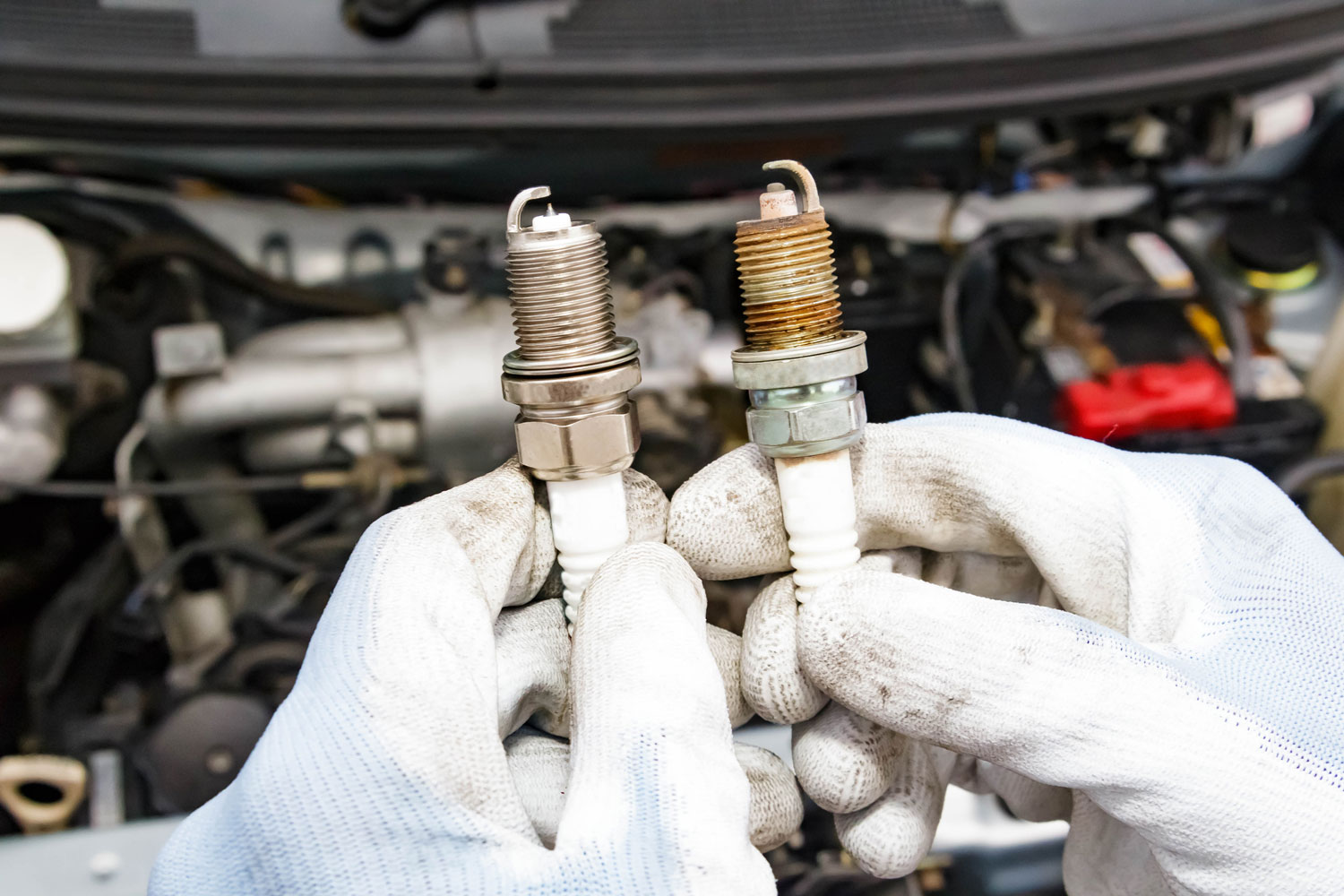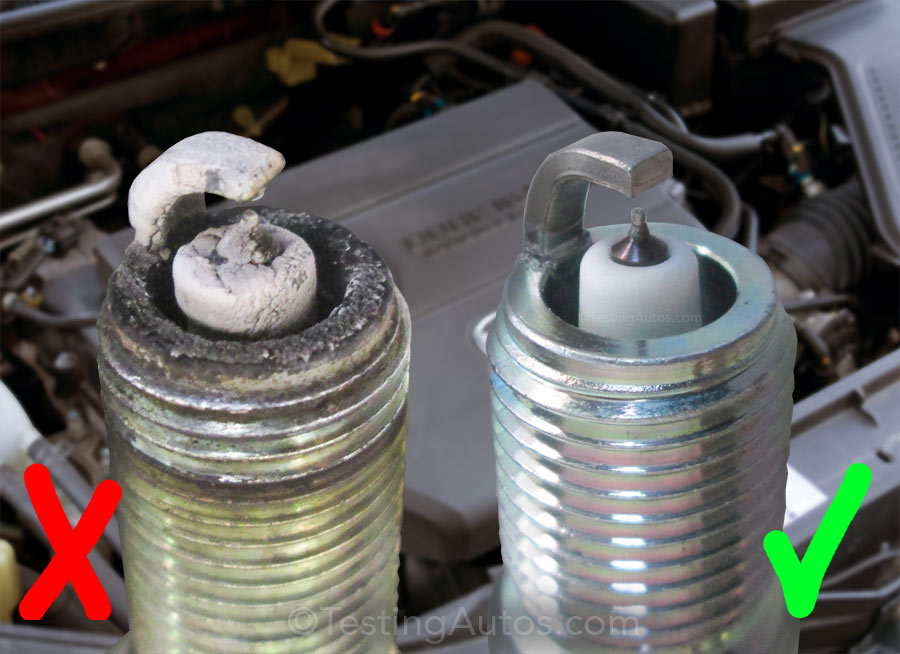Replacing spark plugs typically takes between 30 minutes to 2 hours. The time can vary depending on vehicle model and engine accessibility.
Spark plug replacement is a crucial maintenance task that ensures your engine runs smoothly and efficiently. Over time, spark plugs can become worn or fouled, necessitating their replacement to maintain optimal engine performance. For car owners looking to keep their vehicles in top condition, understanding the importance of timely spark plug replacement is essential.
This task, often straightforward for those with mechanical savvy, can extend the life of your engine and improve fuel economy. By ensuring that spark plugs are in good condition, drivers can avoid potential engine misfires and costly repairs down the line. With the right tools and a bit of knowledge, replacing spark plugs can be a manageable DIY task, or a quick job for a professional mechanic.

Credit: gtrtech.blogspot.com
Introduction To Spark Plug Replacement
Spark plugs are vital for your car’s engine. They ignite the fuel mix, powering your ride. Over time, they wear out. Replacing them restores engine performance. How long does it take? Let’s dive in.
The Role Of Spark Plugs
Spark plugs ignite the air-fuel mixture in your engine. This small action is crucial. It starts the power stroke that drives your vehicle forward. Good spark plugs mean a smooth-running engine.
- Spark plugs create an electric spark.
- They ignite the air and fuel mix.
- Good spark plugs ensure engine efficiency.
Signs You Need A Replacement
Knowing when to replace spark plugs is key. Look for these signs:
- Engine misfires or runs rough.
- Car struggles to accelerate.
- Fuel economy drops.
- Engine starts hard.

Credit: www.capitalone.com
Essential Tools For The Job
Before replacing spark plugs, gather the right tools. This ensures a smooth process. Let’s explore the essential tools needed for the job.
Standard Toolkit
A basic toolkit is necessary. You will need:
- Ratchet – turns sockets
- Socket set – holds spark plugs
- Extension bar – reaches deep sockets
- Screwdrivers – removes engine parts
- Pliers – pulls spark plug boots
Specialized Spark Plug Tools
Some tasks need special tools. For spark plugs, consider:
- Spark plug socket – grips spark plugs
- Gap gauge – measures plug gaps
- Torque wrench – tightens plugs correctly
- Wire puller – removes wires safely
- Anti-seize compound – prevents sticking
Preparation Steps Before Starting
Before you start replacing spark plugs, preparation is key. This guide covers the essential steps. Doing so ensures a smooth and safe process. Let’s dive into the preparation steps.
Safety Measures
- Wear protective gear: Safety glasses and gloves are a must.
- Ensure the engine is cool: Wait at least 30 minutes after driving.
- Disconnect the battery: Start by removing the negative cable.
- Work in a well-ventilated area: Fresh air is important for safety.
Vehicle Setup
- Choose a level surface: This makes the work safer and easier.
- Gather your tools: You’ll need a spark plug socket, ratchet, and extension.
- Consult your vehicle’s manual: It shows the right spark plugs and gap.
- Organize your workspace: Keep tools and new spark plugs within reach.
Step-by-step Guide To Replacing Spark Plugs
Are you ready to learn how to replace spark plugs? This step-by-step guide will show you the way. Replacing spark plugs keeps your car running smoothly. It can save money and prevent future car problems.
Removing The Old Spark Plugs
- First, make sure your car engine is cool.
- Locate the spark plugs. They are in the engine area.
- Disconnect the spark plug wire. Do this carefully.
- Use a spark plug socket to unscrew the old plug. Turn it counterclockwise.
- Remove the old spark plug. Handle with care.
Installing The New Spark Plugs
- Check the gap on your new spark plugs. Use a gap gauge.
- Insert the new spark plug into the engine. Don’t force it.
- Screw in the new spark plug by hand at first. Then use the spark plug socket to tighten. Don’t over-tighten.
- Reconnect the spark plug wire. Make sure it’s secure.
- Repeat these steps for each spark plug that needs replacing.
Replacing spark plugs is a simple task. It keeps your car running well. Always use the right tools and follow safety steps. This guide makes changing spark plugs easy.
Time Factors In Spark Plug Replacement
When replacing spark plugs, several factors affect the time required. Understanding these can help set realistic expectations.
Vehicle Model Variations
Vehicle make and model significantly influence replacement time. Each car has a unique design. Some engines allow easy access to spark plugs. Others have them buried under components.
- Compact cars often have accessible plugs.
- Large SUVs or trucks might need more disassembly.
Consult the owner’s manual for specifics. This ensures accurate time estimates.
Experience Level Impact
The skill level of the person doing the job matters. Professionals may take less time due to their expertise. First-timers should allow extra time for learning.
- Review a reliable guide or watch tutorials.
- Gather all tools before starting.
- Proceed with caution to avoid mistakes.
Remember, patience leads to better outcomes. Rushing may cause cross-threading or other issues.
Common Mistakes To Avoid
Replacing spark plugs is like a mini tune-up for your car. It helps your engine run smoothly. But, even simple tasks have traps. Here are mistakes you should dodge:
Over-tightening The Spark Plugs
Too tight is not right for spark plugs. When you over-tighten, you risk:
- Cracking the spark plug
- Stripping the thread in the engine head
- Making future removal tough
Use a torque wrench, not just your strength. Follow the manufacturer’s specs. Keep those plugs snug, not super tight.
Forgetting To Check The Gap
Every spark plug has a gap. It’s the space where the spark jumps. Your car needs this gap just right. Too big or too small, and your engine misfires or runs poorly.
Use a gap gauge tool. It’s simple and precise. Always check the gap before installing new plugs. Your engine will thank you.
Post-replacement Checks
After replacing spark plugs, a few important checks ensure a job well done. These steps help catch any mistakes and confirm the engine’s health. Let’s walk through these critical post-replacement checks.
Testing Engine Start
First, test the engine. A smooth start often means the plugs work well. Notice any strange sounds or hesitations. These signs can hint at issues. If the engine struggles, double-check your work.
Visual Inspection For Issues
Next, visually inspect the engine bay. Look for loose wires or tools left behind. Ensure all connections are secure. Spark plug wires should be firmly attached. Check for any oil leaks or displaced components that could cause trouble.
- Check for secure connections
- Inspect for cleanliness
- Look for any damages
Document your findings. Keep notes on the engine’s response and any visual cues. This information helps with future maintenance. Remember, these checks protect your engine and your hard work.

Credit: www.testingautos.com
Maintenance Tips For Longer Spark Plug Life
Maintenance Tips for Longer Spark Plug Life ensure your car runs smoothly. Spark plugs need care too. Proper maintenance can extend their life. This saves time and money. Follow these tips to keep them in top shape.
Regular Cleaning
Clean spark plugs work best. Dirt affects performance. Use a wire brush for cleaning. Be gentle to avoid damage. Do this during regular maintenance. Always wear safety gear.
Timely Inspections
Check spark plugs often. Look for wear or damage. Replace if necessary. Use the correct type for your car. Inspect every 30,000 miles. This keeps your engine healthy.
- Check the gap. Use a gap tool.
- Look for rust. Rust means replace.
- Notice misfires. They signal issues.
Frequently Asked Questions
What Is The Typical Time To Replace Spark Plugs?
Replacing spark plugs is generally a quick process, taking about 20 to 30 minutes for a skilled mechanic. The time can vary based on vehicle model and engine accessibility.
Can I Replace My Own Spark Plugs?
Yes, with the right tools and a bit of mechanical knowledge, you can replace your own spark plugs. It’s important to follow the vehicle’s manual and use the correct spark plug type and gap setting.
What Are Signs Of Needing New Spark Plugs?
Signs include engine misfiring, rough idling, high fuel consumption, difficulty starting, and lack of acceleration. If you notice these issues, it’s time to check your spark plugs.
How Often Should Spark Plugs Be Replaced?
Spark plugs should be replaced as part of regular vehicle maintenance. Typically, they need replacing every 30,000 to 90,000 miles, but consult your owner’s manual for specific intervals.
Conclusion
Replacing spark plugs is a crucial task for maintaining your vehicle’s health and performance. The time involved varies, typically ranging from 20 minutes to a couple of hours. It’s essential to consult your car’s manual and seek professional help if needed.
Regular checks can prevent engine issues and ensure a smooth ride.